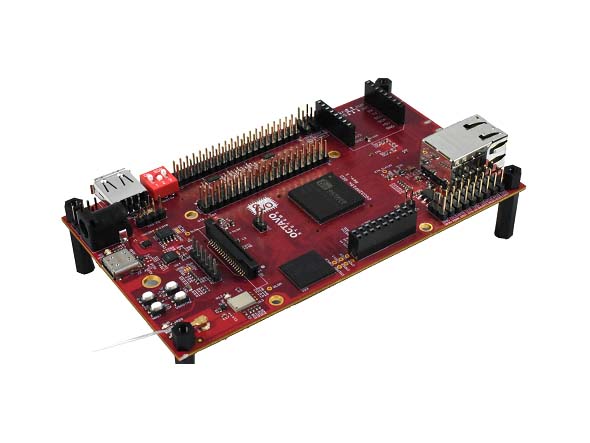
OSD32MP1-RED by Octavo Systems
The OSD32MP1-RED is a full featured Reference, Evaluation and Development platform for the STM32MP1 based SiP, the OSD32MP15x. It provides access to a number of standard communication interfaces like WiFi and Bluetooth, 1Gb Ethernet, and CAN. It supports HDMI or DSI displays and has a connector for a camera. The OSD32MP1-RED expands easily by providing connectors that are compatible with Raspberry Pi, MikroElektronika mikroBUS™ Click, and STMicroelectronics Motor Control Header.
The on board eMMC comes preloaded with an Opensource Linux Distribution allowing you to begin development straight out of the box.
With its communication interfaces, peripherals, and expansion capabilities, the OSD32MP1-RED is a perfect platform for quickly developing IOT, high-end HMI, or real time control applications.
- Full Featured Reference, Evaluation, Development Platform
- OSD32MP157C-512M-BAA
- STM32MP157C Dual Arm® Cortex® A7 + M4
- 512MB DDR3 Memory
- STPMIC1A Power Management
- EEPROM
- Oscillator
- Passives
- Connectivity
- WiFi (IEEE802.11b/g/n) / Bluetooth® v5.1 (BR/EDR/BLE)
- 10/100/1000 Ethernet
- CAN FD
- USB Host
- USB-C OTG
- UART
- JTAG (STLink)
- Memory
- µSD Card
- eMMC
- Display
- HDMI
- DSI
- Camera
- Expansion
- Raspberry Pi Compatible Header
- MikroElektronika Click Header
- Motor Control Header
- 4 Layer Design
Purchase
Contribute
Have some info to add for this board? Edit the source for this page here.
Adafruit Blinka Installation
We use a special library called adafruit_blinka (named after Blinka, the CircuitPython mascot) to provide the layer that translates the CircuitPython hardware API to whatever library the Linux board provides.
For example, on Raspberry Pi we use the python RPi.GPIO library. For any I2C interfacing we'll use ioctl messages to the /dev/i2c device. For SPI we'll use the spidev python library, etc. These details don't matter so much because they all happen underneath the adafruit_blinka layer.
